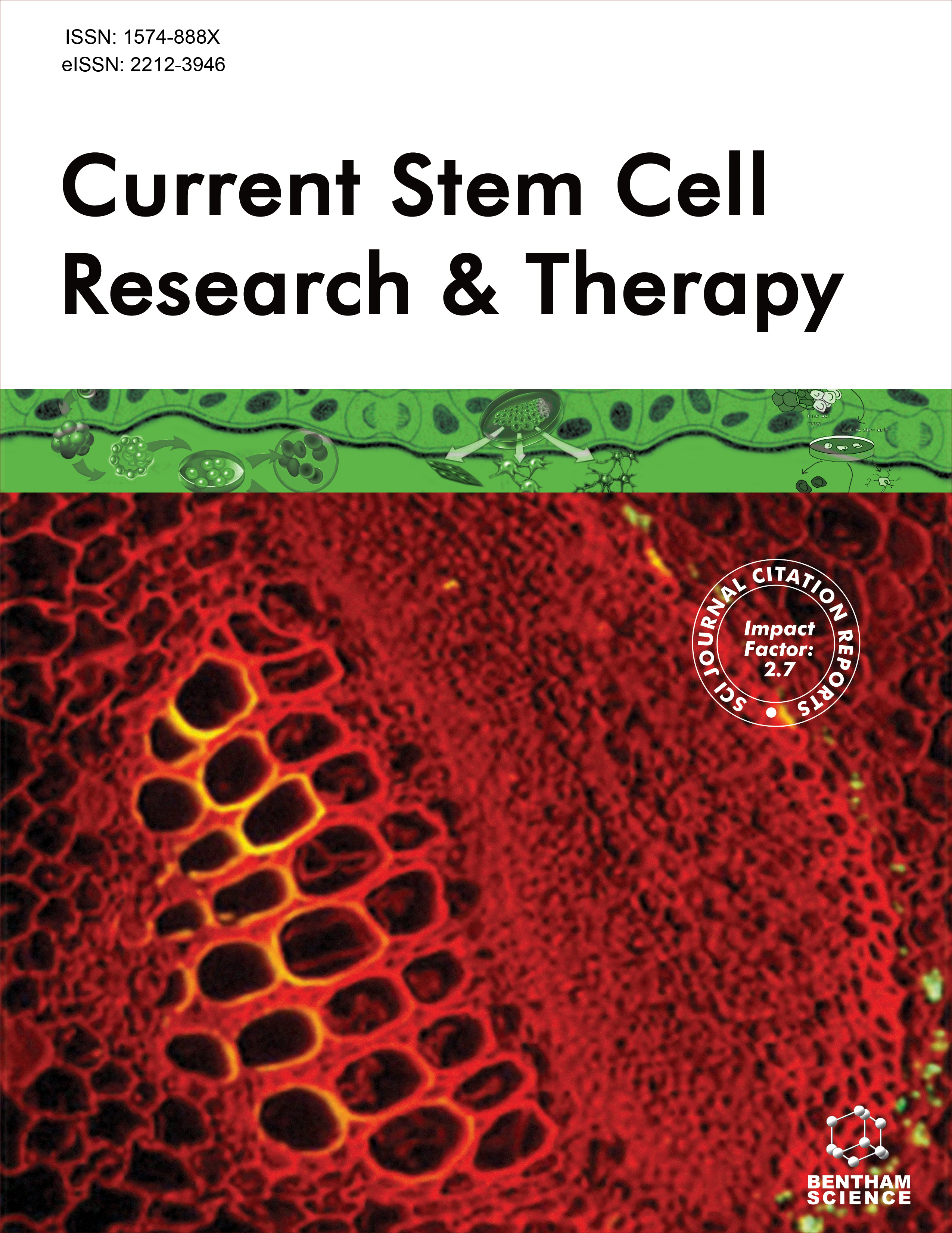- Home
- A-Z Publications
- Current Stem Cell Research & Therapy
- Previous Issues
- Volume 17, Issue 1, 2022
Current Stem Cell Research & Therapy - Volume 17, Issue 1, 2022
Volume 17, Issue 1, 2022
-
-
Visualized Analyses of Investigations Upon Mesenchymal Stem/stromal Cell-based Cytotherapy and Underlying Mechanisms for COVID-19 Associated ARDS
More LessAuthors: Wang Aitong, Zhang Leisheng and Yu HaoThe outbreak of coronavirus disease 2019 (COVID-19) triggered by severe acute respiratory syndrome coronavirus 2 (SARS-CoV-2) has become a widespread pandemic globally and seriously threatened public health. Patients with COVID-19 infection, and in particular, those with severe pneumonia-associated acute respiratory distress syndrome (ARDS) manifested rapid disease progression and the resultant high mortalit Read More
-
-
-
Ascorbic Acid in Epigenetic Reprogramming
More LessAuthors: Xinhui Liu, Aamir Khan, Huan Li, Shensen Wang, Xuechai Chen and Hua HuangEmerging evidence suggests that ascorbic acid (vitamin C) enhances the reprogramming process by multiple mechanisms primarily due to its cofactor role in Fe(II) and 2-oxoglutarate-dependent dioxygenases, including the DNA demethylases Ten Eleven Translocase (TET) and histone demethylases. Epigenetic variations have been shown to play a critical role in somatic cell reprogramming. DNA methylation and histon Read More
-
-
-
The Potential Applications of Stem Cells for Cancer Treatment
More LessAuthors: Malikeh R. Niknam and Farnoosh AttariScientists encounter many obstacles in traditional cancer therapies, including the side effects on the healthy cells, drug resistance, tumor relapse, the short half-life of employed drugs in the blood circulation, and the improper delivery of drugs toward the tumor site. The unique traits of stem cells (SCs) such as self-renewal, differentiation, tumor tropism, the release of bioactive molecules, and immunosuppression have opene Read More
-
-
-
The World Against Versatile SARS-Cov-2 Nanomachines: Mythological or Reality?
More LessAuthors: Shima Tavakol, Hani Tavakol, Mo S. Alavijeh and Alexander SeifalianNanomachines hold promise for the next generation of emerging technology; however, nanomachines are not a new concept. Viruses, nature’s nanomachines, have already existed for thousands of years. In 2019, the whole world had to come together to confront a life-threatening nanomachine named “SARS-CoV-2”, which causes COVID-19 illness. SARS-CoV-2, a smart nanomachine, attaches itself to the ACE2 and Read More
-
-
-
Photo Cross-linkable Biopolymers for Cornea Tissue Healing
More LessAuthors: Negar Nozari, Esmaeil Biazar, Mahshad Kamalvand, Saeed H. Keshel and Shervin ShirinbakhshLight can act as an effective and strong agent for the cross-linking of biomaterials and tissues and is recognized as a safe substitute for chemical cross-linkers to modify mechanical and physical properties and promote biocompatibility. This review focuses on the research about crosslinked biomaterials with different radiation sources such as Laser or ultraviolet (UV) that can be applied as scaffolds, controlled release system Read More
-
-
-
Comparison of the Characteristics of Breast Milk-derived Stem Cells with the Stem Cells Derived from the Other Sources: A Comparative Review
More LessBreast milk (BrM) is not only a nutrition supply but also contains a diverse population of cells. It has been estimated that up to 6% of the cells in human milk possess the characteristics of mesenchymal stem cells (MSC). Available data also indicate that these cells are multipotent and capable of self-renewal and differentiation to other cells. In this review, we have compared different characteristics such as CD markers, differen Read More
-
-
-
Development and Clinical Application of Tumor-derived Exosomes in Patients with Cancer
More LessA tumor is an abnormal growth of cells within a tissue that can lead to death due to late diagnosis, poor prognosis, drug resistance, and finally enhanced metastasis formation. Exosomes are nanovesicles that have been derived from all the different cell types. These vesicles can transfer various molecules, including the distinct form of nucleic acids (mRNA, miRNA, and circRNA) and proteins. Tumor-derived exosomes (TEX Read More
-
Volumes & issues
-
Volume 20 (2025)
-
Volume 19 (2024)
-
Volume 18 (2023)
-
Volume 17 (2022)
-
Volume 16 (2021)
-
Volume 15 (2020)
-
Volume 14 (2019)
-
Volume 13 (2018)
-
Volume 12 (2017)
-
Volume 11 (2016)
-
Volume 10 (2015)
-
Volume 9 (2014)
-
Volume 8 (2013)
-
Volume 7 (2012)
-
Volume 6 (2011)
-
Volume 5 (2010)
-
Volume 4 (2009)
-
Volume 3 (2008)
-
Volume 2 (2007)
-
Volume 1 (2006)
Most Read This Month
Article
content/journals/cscr
Journal
10
5
false
en


